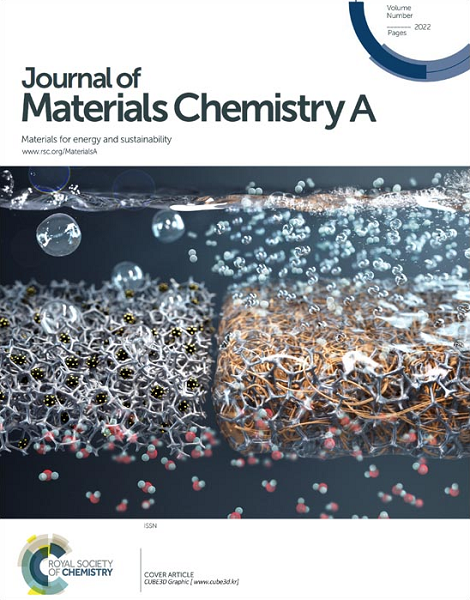Nanowire Morphology Control in Sb Metal-derived Antimony Selenide Photocathodes for Solar Water Splitting
IF 10.7
2区 材料科学
Q1 CHEMISTRY, PHYSICAL
引用次数: 0
Abstract
We report a facile method to enhance the photoelectrochemical (PEC) performance of Sb2Se3 photocathodes by controlling the growth of bilayer Sb2Se3 consisting of vertically oriented nanorods on a compact Sb2Se3 layer. Sb2Se3 thin films with controllable nanorod diameters were achieved by manipulating the substrate temperatures during metallic Sb thin film deposition. The lower temperature-derived Sb2Se3 photocathode, with a larger nanorod diameter (202 ± 48 nm), demonstrated a photocurrent density of -15.2 mA cm−2 at 0 VRHE and an onset potential of 0.21 VRHE. In contrast, the higher temperature-derived Sb2Se3 photocathode, with a smaller nanorod diameter (124 ± 28 nm), exhibited an improved photocurrent density of -22.1 mA cm−2 at 0 VRHE and an onset potential of 0.31 VRHE. The enhanced PEC performance is attributed to reduced charge recombination, facilitated by a shorter charge transport path in the [hk0] direction. This study highlights the significance of morphology control in optimizing Sb2Se3 photocathodes, providing insights for future material and device design.求助全文
约1分钟内获得全文
求助全文
来源期刊

Journal of Materials Chemistry A
CHEMISTRY, PHYSICAL-ENERGY & FUELS
CiteScore
19.50
自引率
5.00%
发文量
1892
审稿时长
1.5 months
期刊介绍:
The Journal of Materials Chemistry A, B & C covers a wide range of high-quality studies in the field of materials chemistry, with each section focusing on specific applications of the materials studied. Journal of Materials Chemistry A emphasizes applications in energy and sustainability, including topics such as artificial photosynthesis, batteries, and fuel cells. Journal of Materials Chemistry B focuses on applications in biology and medicine, while Journal of Materials Chemistry C covers applications in optical, magnetic, and electronic devices. Example topic areas within the scope of Journal of Materials Chemistry A include catalysis, green/sustainable materials, sensors, and water treatment, among others.
 求助内容:
求助内容: 应助结果提醒方式:
应助结果提醒方式:


